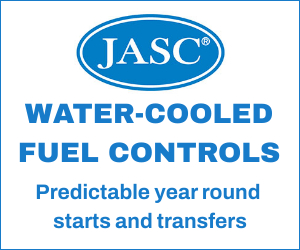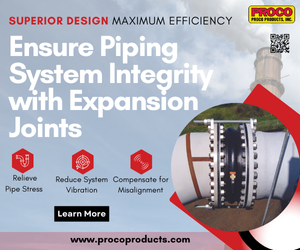Rob Wang of Engineering Analysis Services Ltd (UK), presented on outage planning and life extension of cycling plants at European Technology Development Ltd’s International Conference on Power Plant Operation and Flexibility, London, July 2018. He highlighted both piping system health management and analytical techniques for component life assessment.
Piping system details are, perhaps, too often overlooked. Wang reminded participants of cyclic thermal movements, large stresses at nozzles, and incremental plastic collapse damage to constant-load hangers.
For system health issues, stated Wang, “long piping systems are subject to cyclic thermal movements that generate peak stress/strain at the nozzles and hangers.” Constant-load hangers (and variable-load spring supports) are used for balanced piping systems, allowing movement within clearly specified limits and maintaining stresses within code.
But operators must be aware of cycling’s impact, as well as the more common degradation forces of corrosion, loosening of bolted connections, and misalignments (among others). He therefore encouraged piping stress analysis and assessments, and periodic hanger surveys and full piping system reviews.
For the latter, he offered clear specifics:
1. Set up a live database from the design and installation records to include:
• Hanger ID and setting positions in both cold and hot conditions.
• Hanger travel limits.
• Movement between cold and hot conditions.
• Dates for installation, effort adjustment/reset and replacement/ resetting.
2. Conduct the following three surveys for every maintenance period:
• Pre-outage survey in hot condition.
• Survey during outage in cold condition.
• Post-outage survey in hot condition.
3. For each survey, generate a technical report on findings, system health, and maintenance recommendations. He then gave details for each survey:
Pre-outage hot survey
• Survey hangers/supports to obtain hanger position readings.
• Review current readings against as-built benchmark and historical data.
• Identify out-of-range hot positions and predict possible out-of-range cold positions.
• Make outage-team maintenance recommendations for hanger effort adjustments or hanger replacement.
Outage cold survey
• Survey hangers/supports to obtain position readings.
• Review current readings against as-built and historical data.
• Confirm/verify out-of-range cold positions predicted during the pre-outage hot survey.
• Make hanger support effort adjustments based on pre-outage hot recommendations and the current out-of-range findings.
• Record adjustment details and revised hanger readings.
• Predict out-of-range hot hanger positions.
Post-outage hot survey
• Survey hangers/supports to obtain position readings.
• Review current readings against as-built and historical data.
• Check that adjusted hangers are within range.
• Record adjustment details and revised hanger readings.
• Note any potential out-of-range indications.
Wang stressed his recommendation to repeat these surveys for every maintenance cycle. He reminded participants to also inspect for any degradation by rust, lost or loose nuts, obstruction, misalignment, unintended deformation or configuration change, and to finish each survey process by informing outage planning of all findings.
Such information assists the entire plant in life-extension work, and provides early warnings on risk issues.










